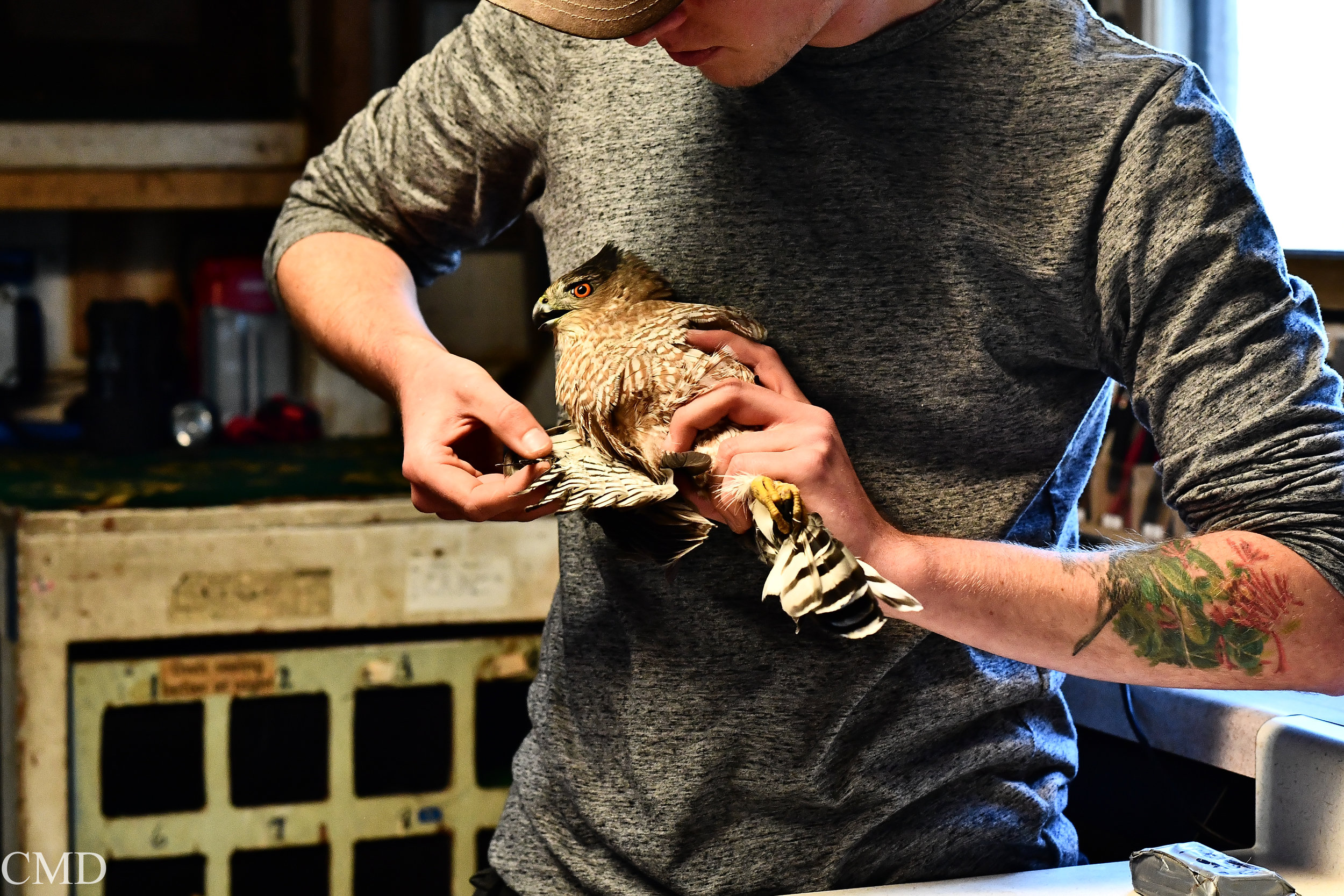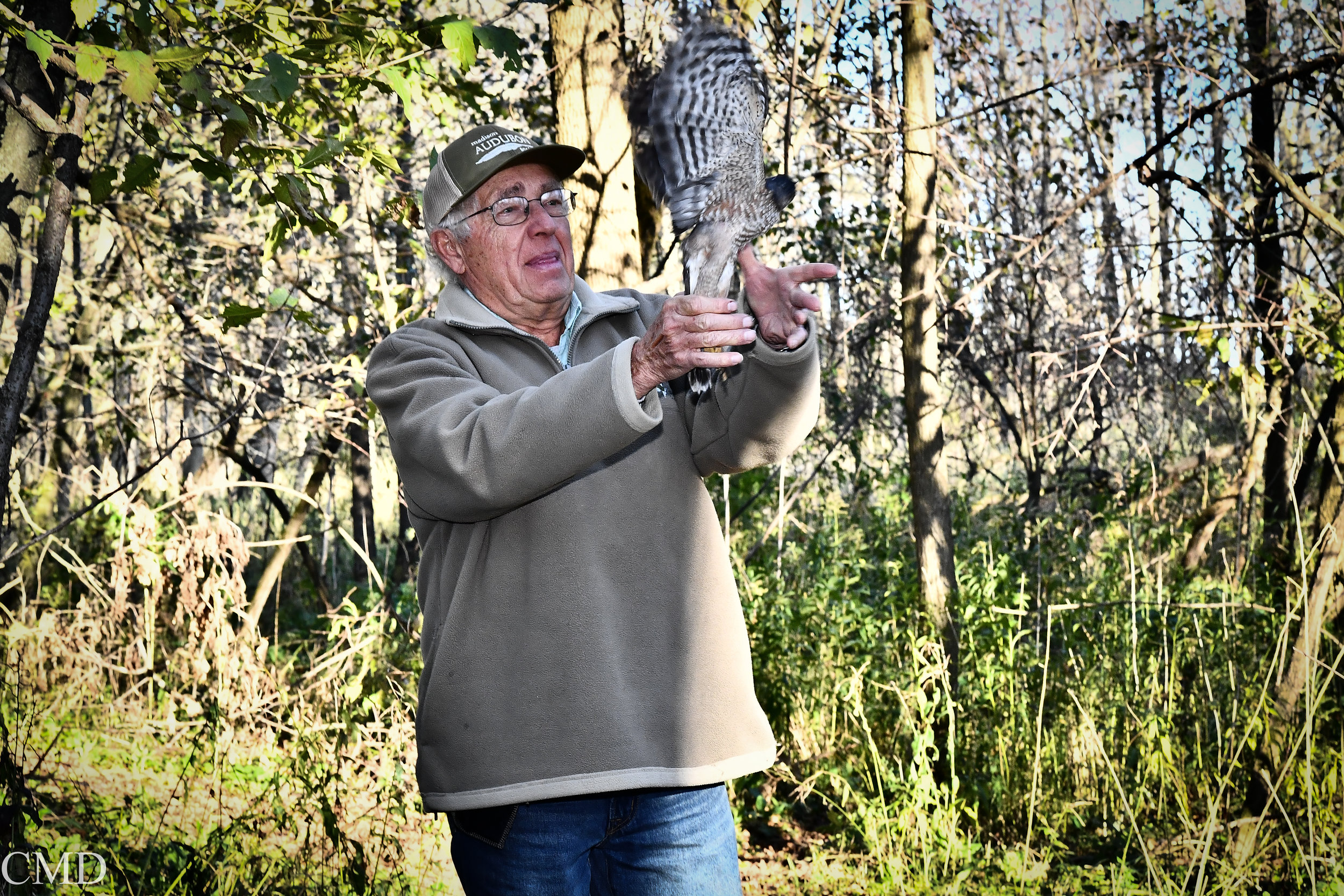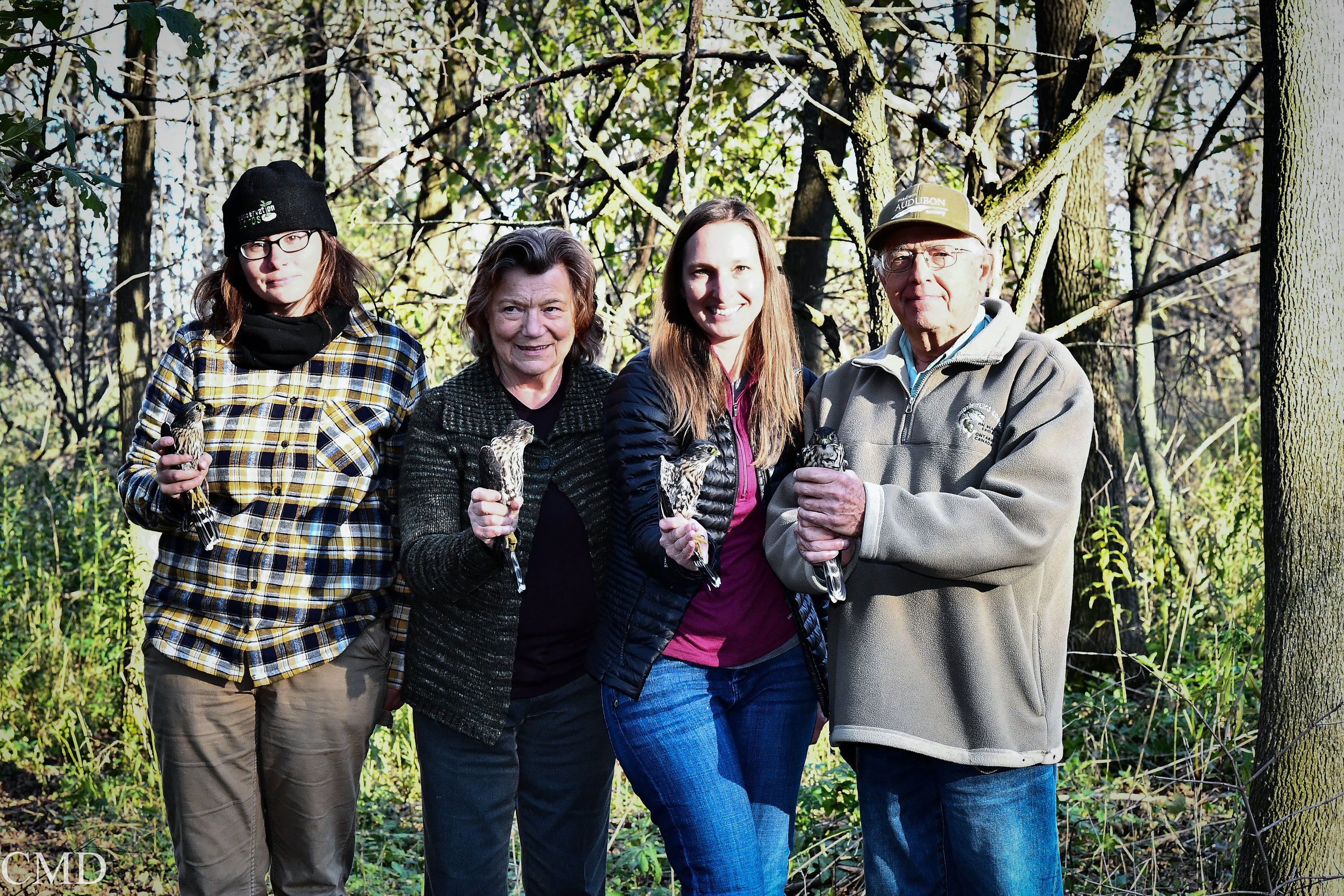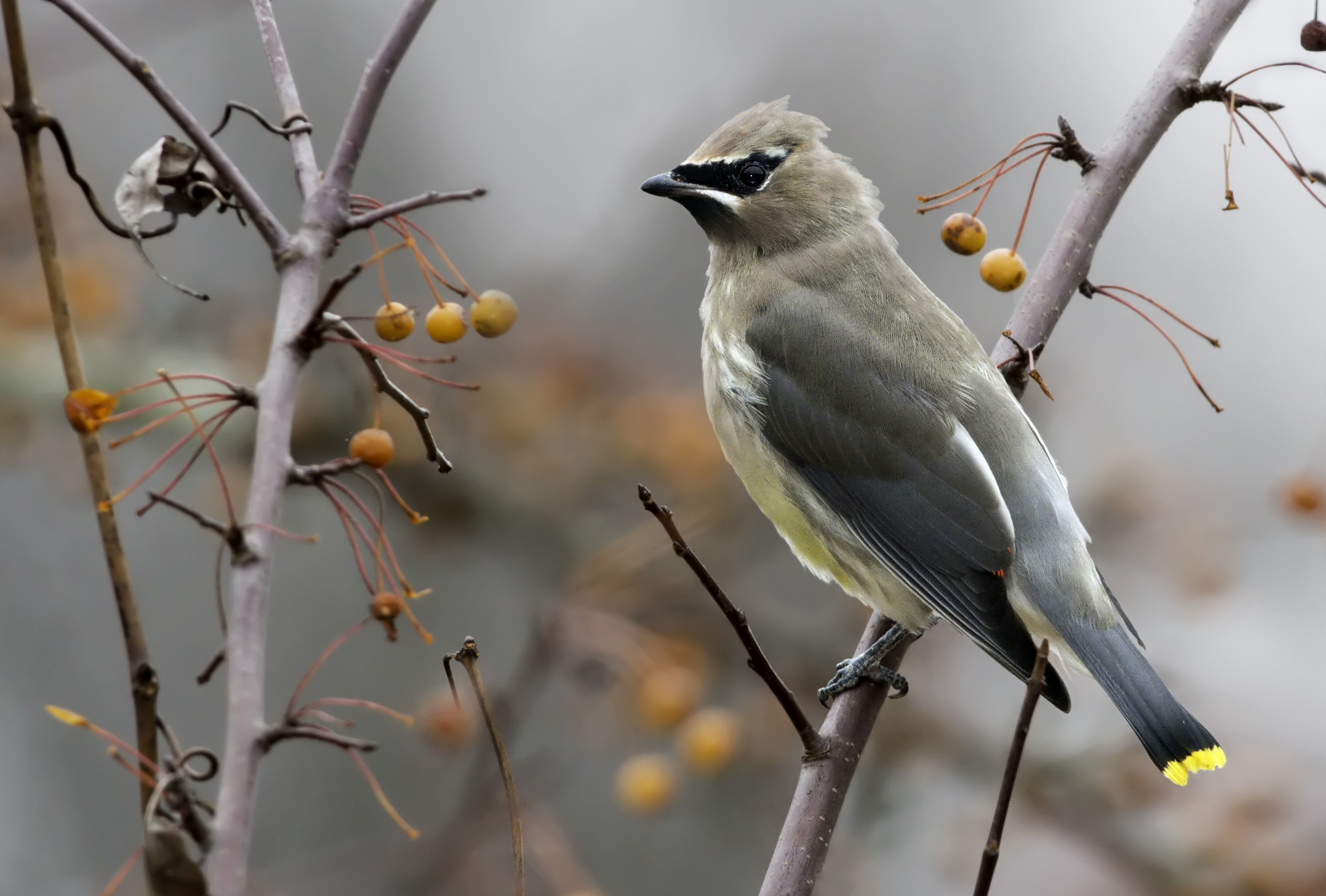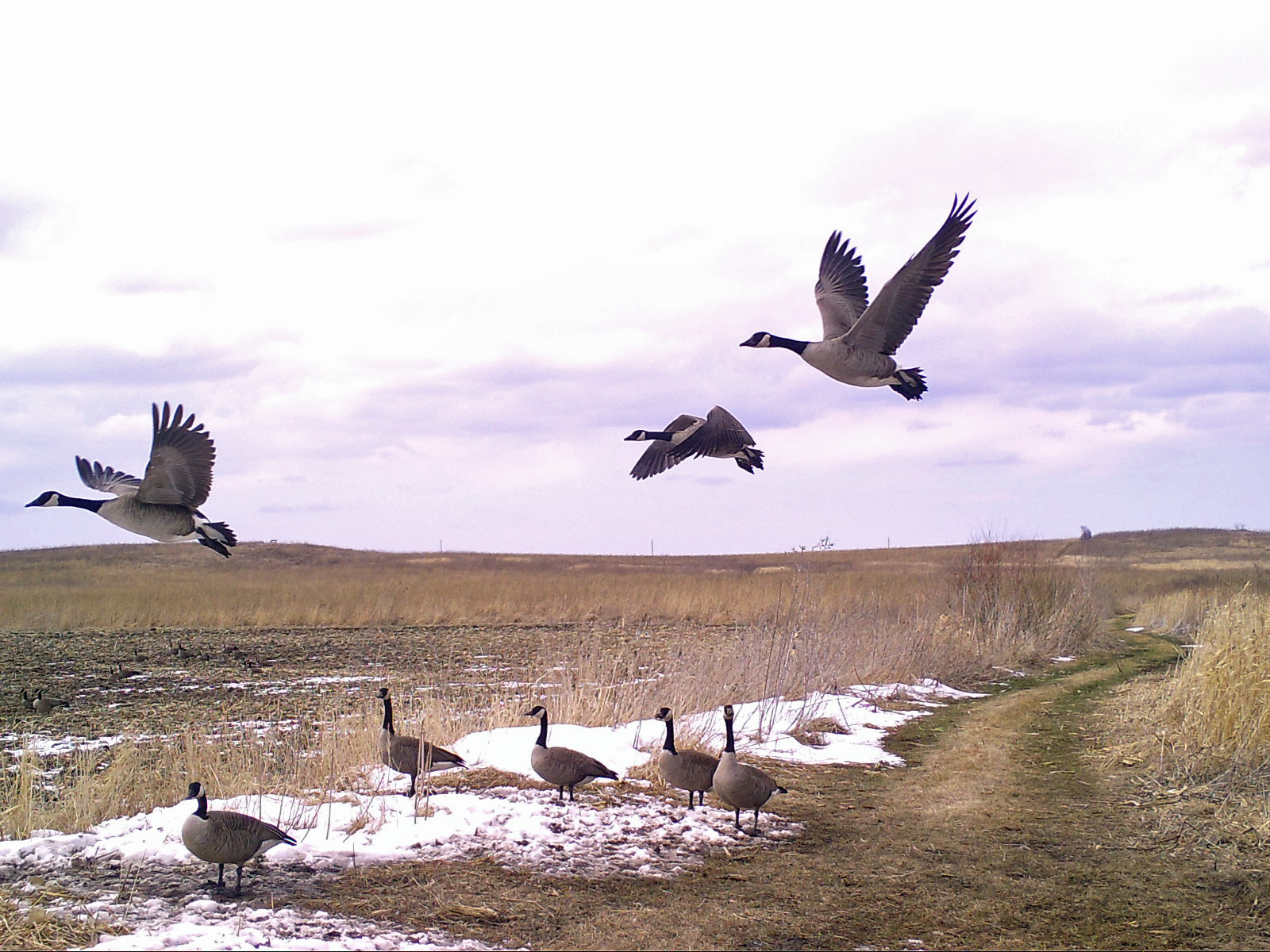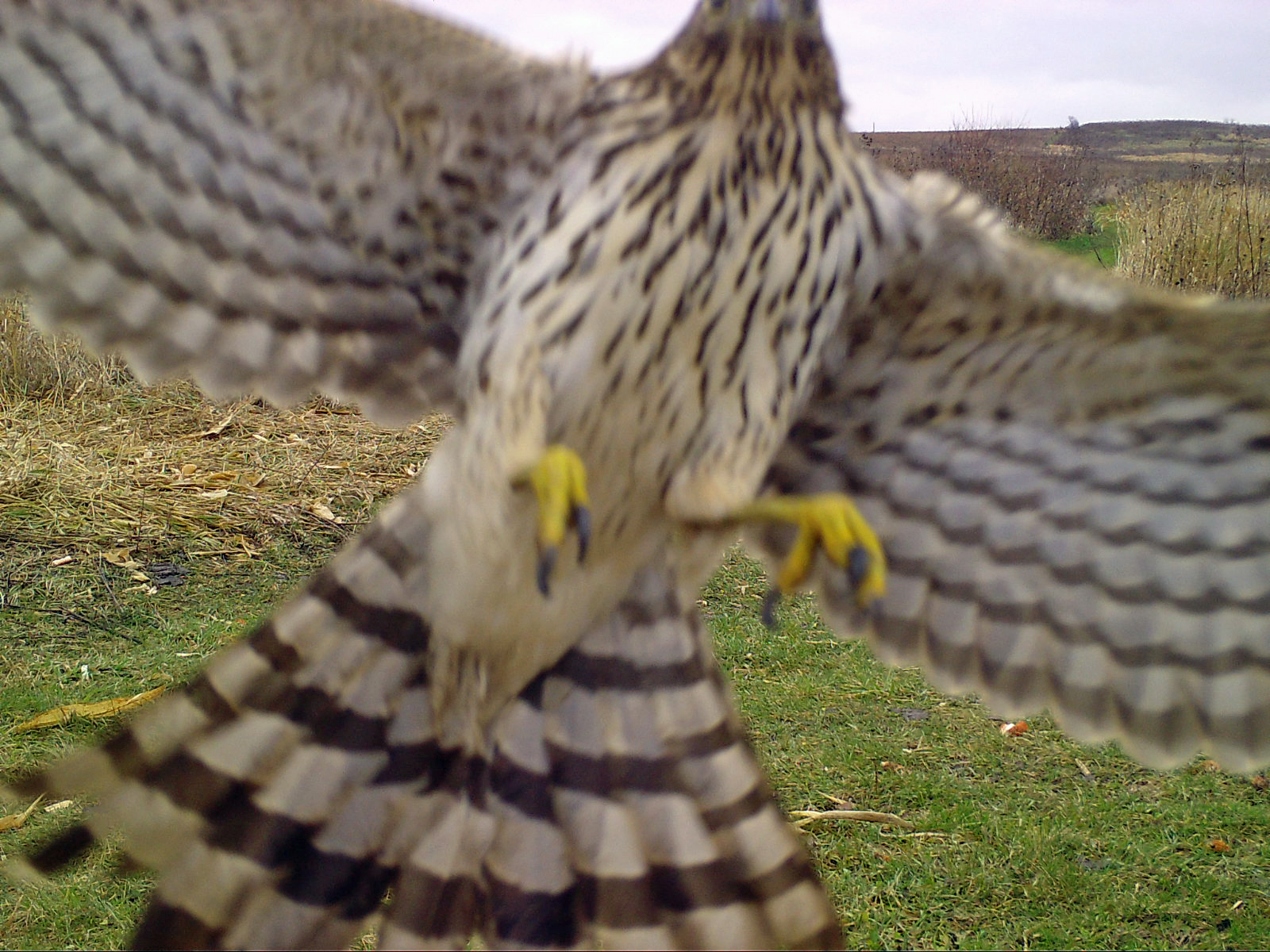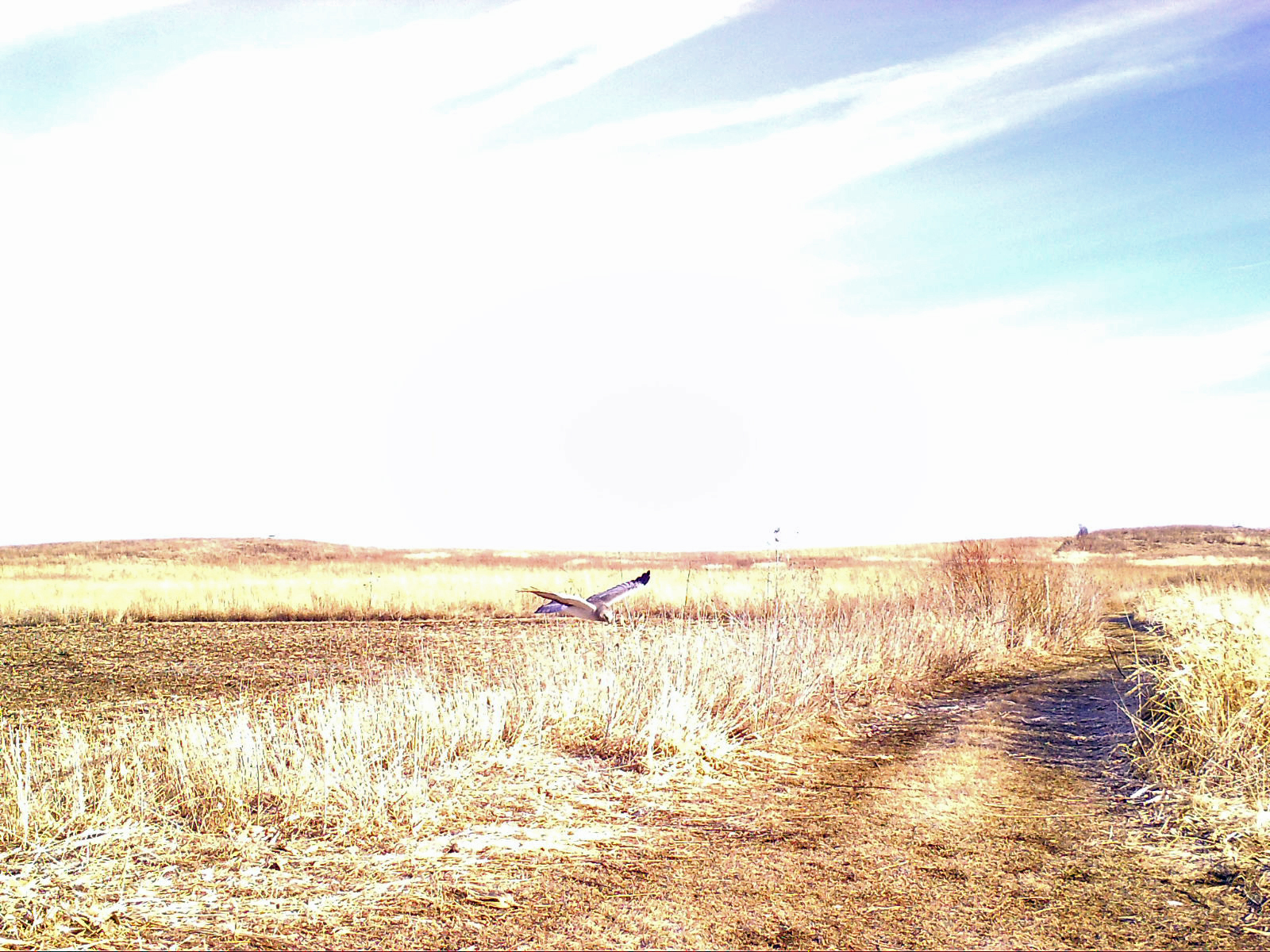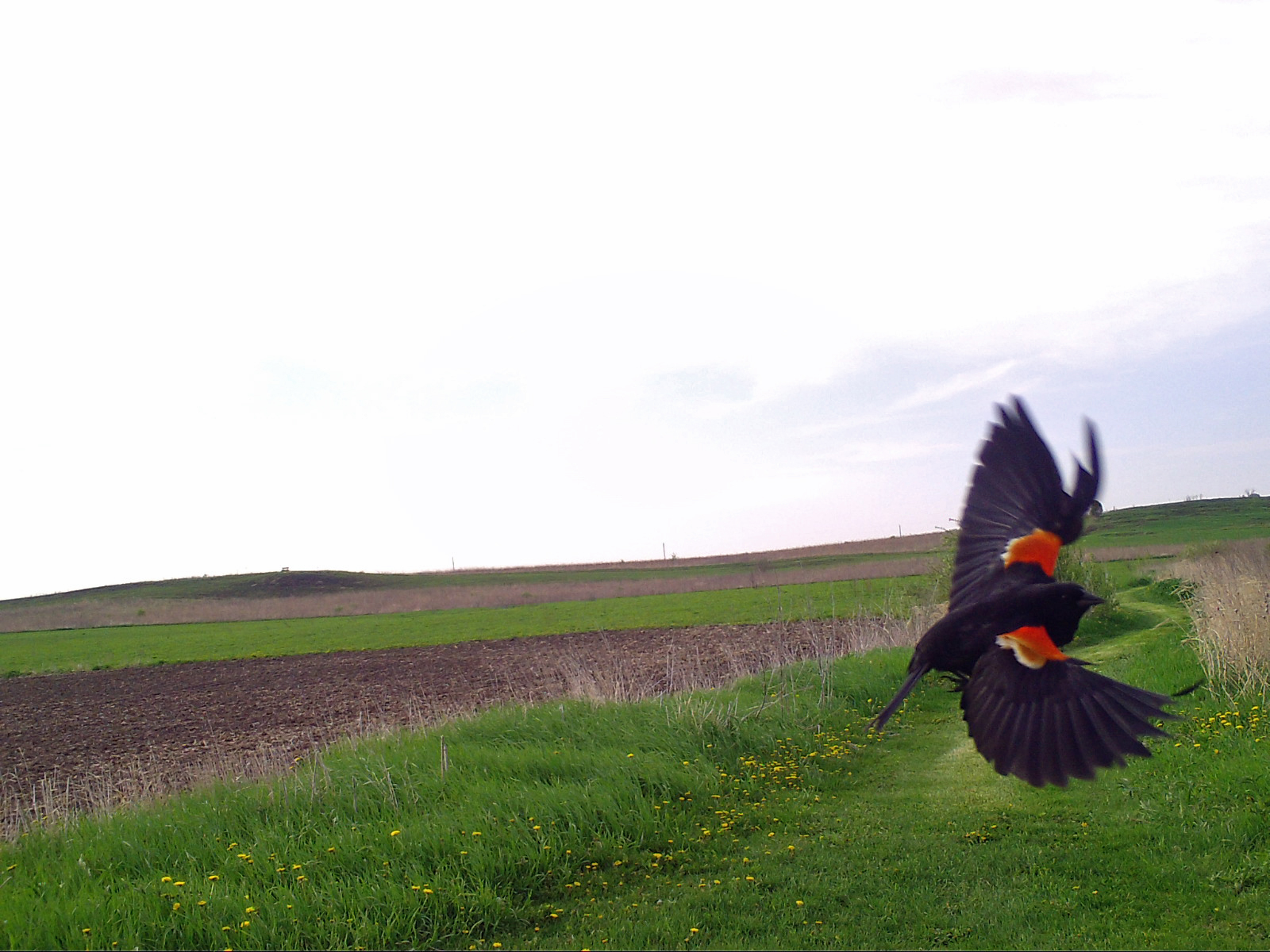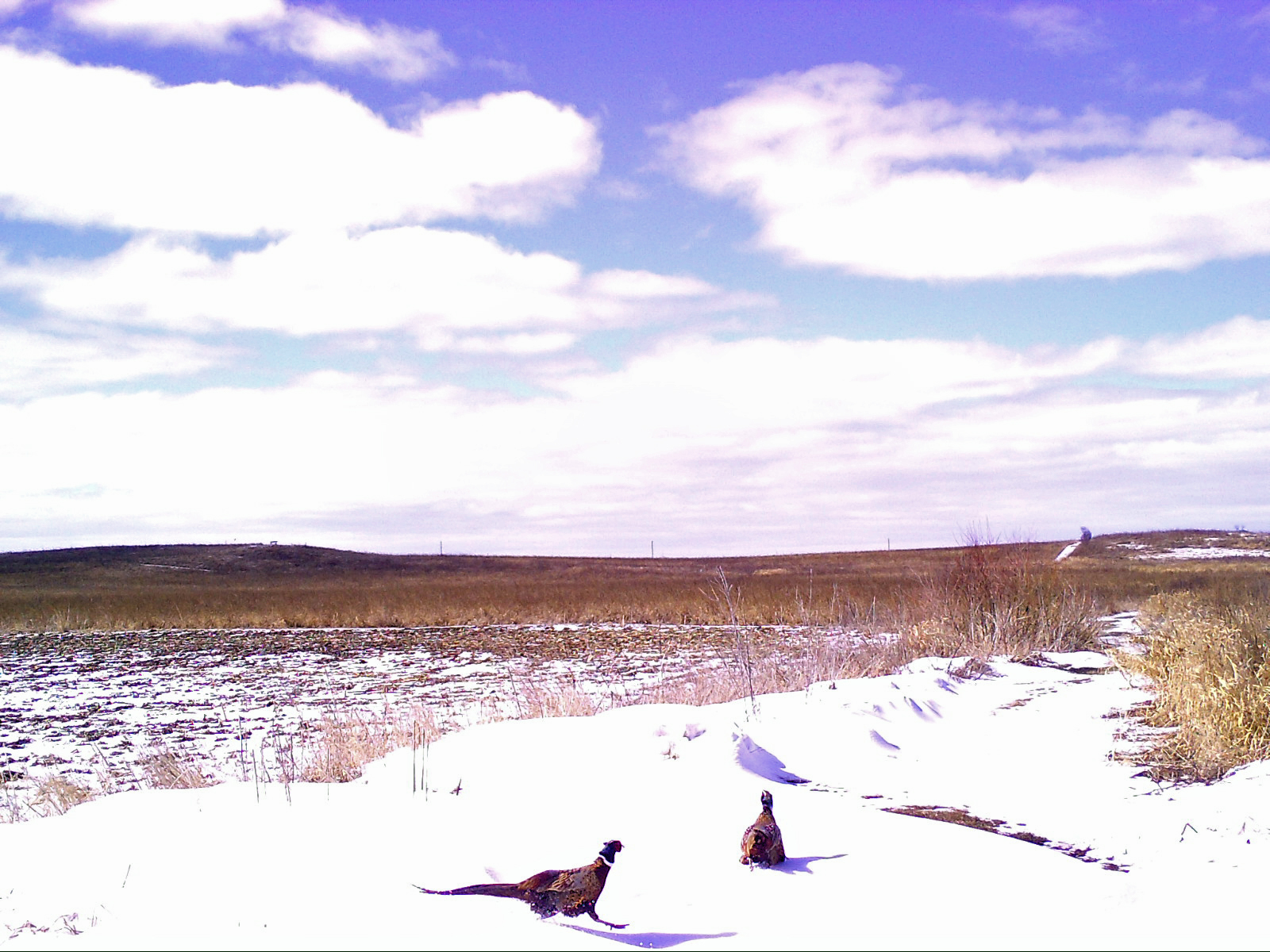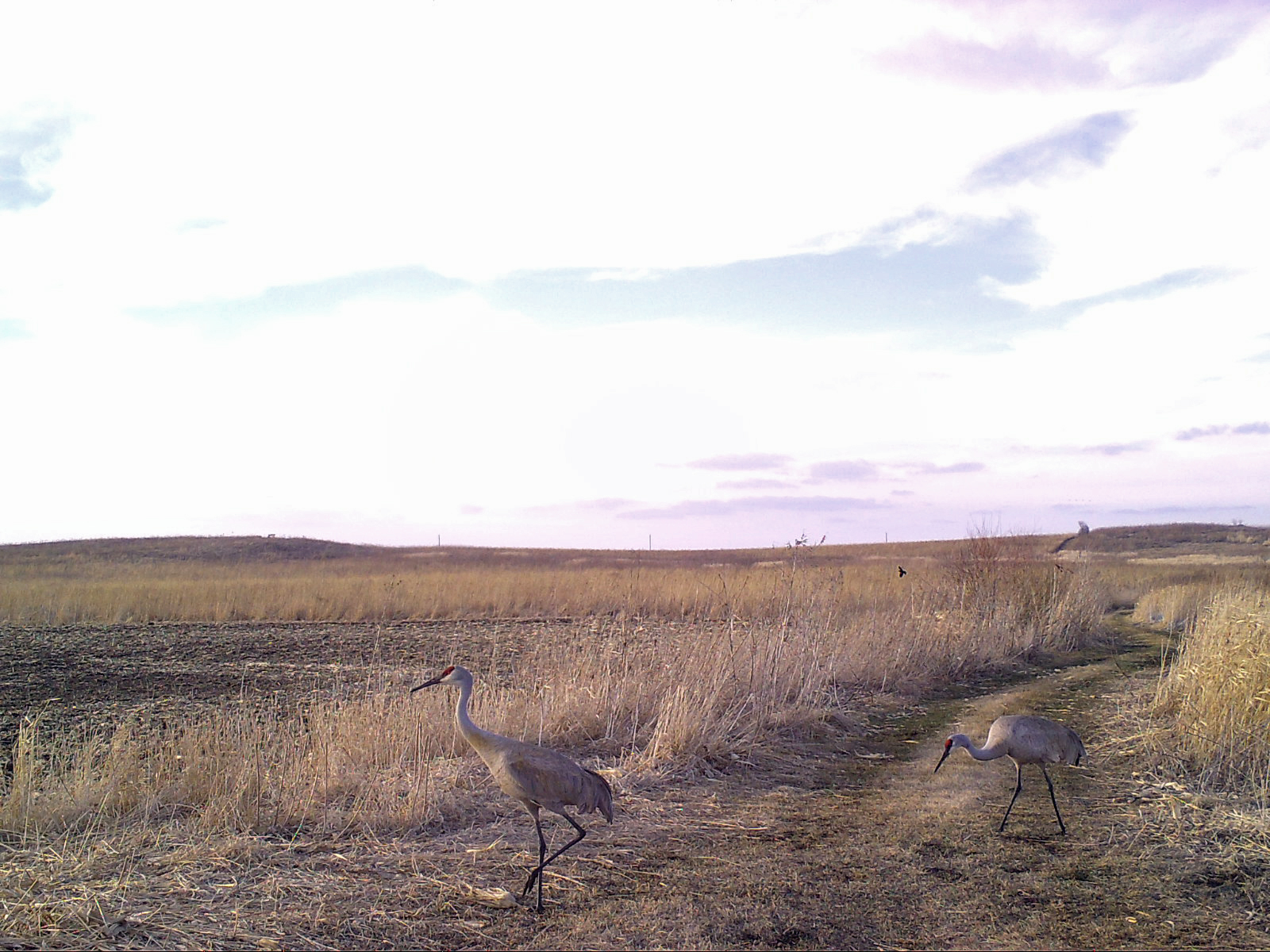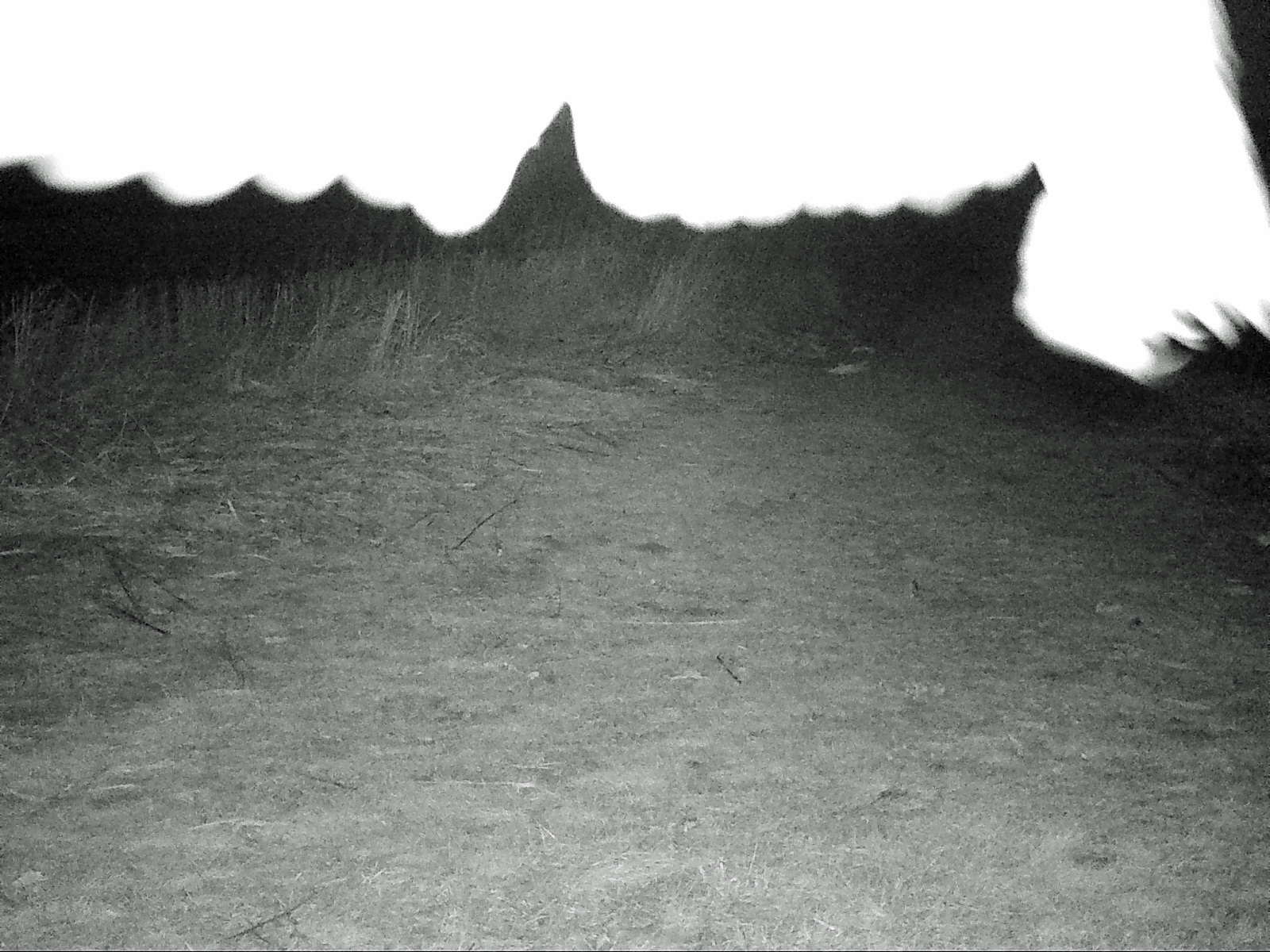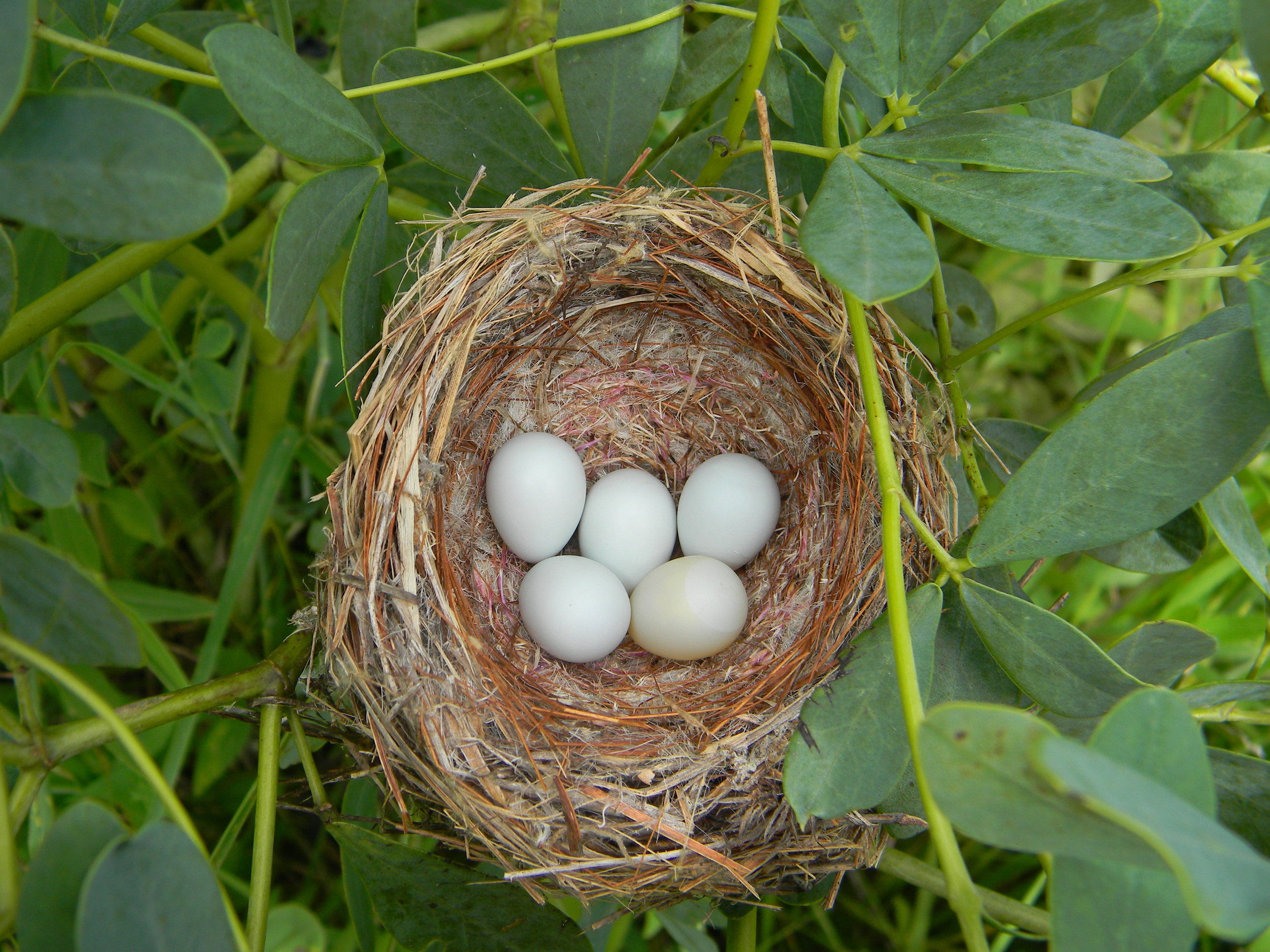It doesn’t look like much when you first walk up to it -- just a small green shack adjacent to a footpath through the woods. It’s only open for four months (August-November) during the year and public access is limited. If you want a tour of this place, you need special permission. I was lucky enough to be a part of a Natural Resources Foundation of Wisconsin field trip group, led by Mark Martin, to experience what goes on at the Cedar Grove Ornithological Research Station. Though it doesn’t look like there’s a lot going on from the outside, trust me, there is.
Cedar Grove Ornithological Research Station lies just off the shore of Lake Michigan outside of Cedar Grove. It’s an operation that began in the 1930s when the Milwaukee Public Museum began banding hawks there. Operations ceased in the 1940s due to the war. In 1950, Dan Berger and Helmut Mueller started banding all species of raptors that flew by on their migratory routes, and that is still the primary purpose of the station today. It is the most well-known banding station with the longest continuous history of banding, and is strictly run by volunteers who have a deep, sustaining passion for birds-of-prey research. Since it started, the research station has captured, banded, and released more than 43,000 hawks and owls.
The moment you walk into the shack, you’re a little overwhelmed with everything around you. Off to the right is a small office fit for a small gathering of people, a desktop cycling through pictures of volunteers holding raptors, and many raptor books. Ahead of you is a small stove and a few end tables and shelves with personal volunteer items and tools. There is also a larger table where the banding takes place. If you step just past the banding table, you see multiple shelves filled with many cans that have raptor tails sticking out of them - a bizarre site to see. Plastered all over the walls are amusing quotes, cartoons, jokes, and newspaper headlines that keep the mood light. You could spend an hour just wandering around reading them all, and a few are sure to put a smile on your face. Tom Meyer, master bander and co-manager of operations, sat all of us down for a bit and told us about the work he does, the history of the center, and what to expect for the day. Within the first few minutes of chatting with Tom, his enthusiasm for the work became obvious.
Mark Smith and Rick Hill (co-manager of operations) with a sharp-shinned hawk. Photo by Nydia Kien
At the end of the room is a door leading to the observation room. This is where the group met the two interns for this year, Andrew and Frances, and Lisa and Steve, a couple from Oregon that take an annual vacation to volunteer at the field station. They were sitting on stools staring intently at the sky through a long, narrow viewing window. Soon, someone yelled “bird over the hump!” and Andrew immediately began pulling a rope which, if you glanced through the viewing window, could see was causing a starling to continually bounce up and down. As desired, that moving bait caught the sharp-shinned hawk’s eye and it flew in at top speed ready to grab its next meal with outstretched talons. Unknown to the hawk, however, was a hard-to-see mist net strung up carefully just before the bait. As that sharp-shinned came in for a landing, it got caught in the mist net and Frances quickly ran out to untangle it and bring it in for banding. Once they had dozen or so birds ready to be banded, the process began.
John Bowers, a 29-year volunteer with a knack for telling jokes, and Mark did the recording while Andrew took the measurements. Andrew noted the species, sex, and age as well as, molting characteristics, tail feather length, count of primary and secondary feathers, wing length, presence of fat, and presence of food in the crop. A small, silver band with a specific set of numbers was carefully placed on the birds leg and just like that, the bird was ready to be released. Banding gives us essential insights into bird migratory movements and ranges, survival rates, longevity, and changes in migration patterns and numbers. Their banding operation documented the great decline in numbers due to DDT and then the recovery after DDT was banned.
Doug Steege observing Andrew, intern, counting primary and secondary feathers on a cooper’s hawk. Photo by Catherine Drexler
The Wisconsin Natural Resources Foundation group couldn’t have come on a better day. It was a clear, sunny day with northwest winds pushing the birds towards Lake Michigan and down along the shoreline right to where Cedar Grove Ornithological Research Station is posted. The day was filled with good spirits and joking around while we completed meaningful work. At several, random times throughout the day you could hear Tom yell, “FREEZE!” When he yelled this, anyone who was outside the building had to be incredibly still so a bird flying in wouldn’t be distracted by human movement. It was a record day for this year and Tom Meyer noted that “it was the best day for banding since I’ve been here.” When we left at 5:00 p.m. they had seen 312 hawks and banded 56 of them: northern harriers 4 seen (0 banded); bald eagle 1 (0); sharp-shinned hawk 160 (42); Cooper’s hawk 9 (2); red-tailed hawk 7 (1); merlins 128 (11) and peregrine falcon 1.
Goose Pond intern Jacqueline Komada and a saw-whet owl lock eyes during the field trip. Photo by Catherine Drexler
Everyone who came on the field trip was able to get up close and personal with a bird-of-prey and release it. Some of us even got release two tiny saw-whet owls! I think that was the most memorable experience for me, personally. Here I was, holding this beautiful creature in my hand and we were both staring at each other, completely aware of the others presence. There are a thousand other circumstances where this moment wouldn’t have occurred and I actually got be a part of it. I am beyond thankful. Together, at the end of the day before we left, we all released four sharp-shinned hawks and four merlins. It was the perfect ending to a remarkable day.
On October 21, Brand Smith also took over six kestrel box monitoring volunteers to the Cedar Grove Station. They had southwest winds and while the day wasn’t quite as busy as when I went, they still caught 10 hawks: two red-tails, a Cooper’s, a goshawk, and six sharp-shins. Earlier this week I was chatting with Nydia Kien, a volunteer, about the experience she had. She told me how incredible it was to hold a sharp-shinned hawk in her hand and how she couldn’t believe how fast the hawks fly when they narrow in on their prey! She mentioned how attentive the staff and interns are when searching for hawks through the observation window. “I don’t know how they keep track of them when they fly in!” she exclaimed. Nydia had a positive, insightful time on Sunday and is very glad she went.
Photos in the slideshow below, from left to right (click on the photos to advance the slideshow): 1) Bill Forest with a sharp-shinned hawk. Photo by Nydia Kien. 2) JD Arnston with a red-tailed hawk. Photo by Nydia Kien. 3) Recently released saw-whet owl. Photo by Nydia Kien. 4) Intern Andrew banding a Cooper’s hawk. Photo by Catherine Drexler. 5) Mark Martin releasing a merlin. Photo by Catherine Drexler. 6) Jacqueline, Helen Drexler, Lisa, and Mark about to release four merlins. Photo by Catherine Drexler.
If reading this has got you itching to do some bird watching -- don’t worry! You don’t have to travel all the way to Lake Michigan to see hawks and falcons on their migratory routes. At Goose Pond Sanctuary, Sue Foote-Martin sighted a peregrine falcon flying over the house on October 23. Other raptors observed this fall at Goose Pond include Cooper’s, northern harriers, red-tails, American kestrels, a merlin and an occasional bald eagle. Come out in this brisk fall weather and and see who’s out and about!
Written by Jacqueline Komada, Goose Pond Sanctuary intern
Cover photo shows Jacqueline, Helen Drexler, Lisa, and Mark about to release four merlins. Photo by Catherine Drexler









